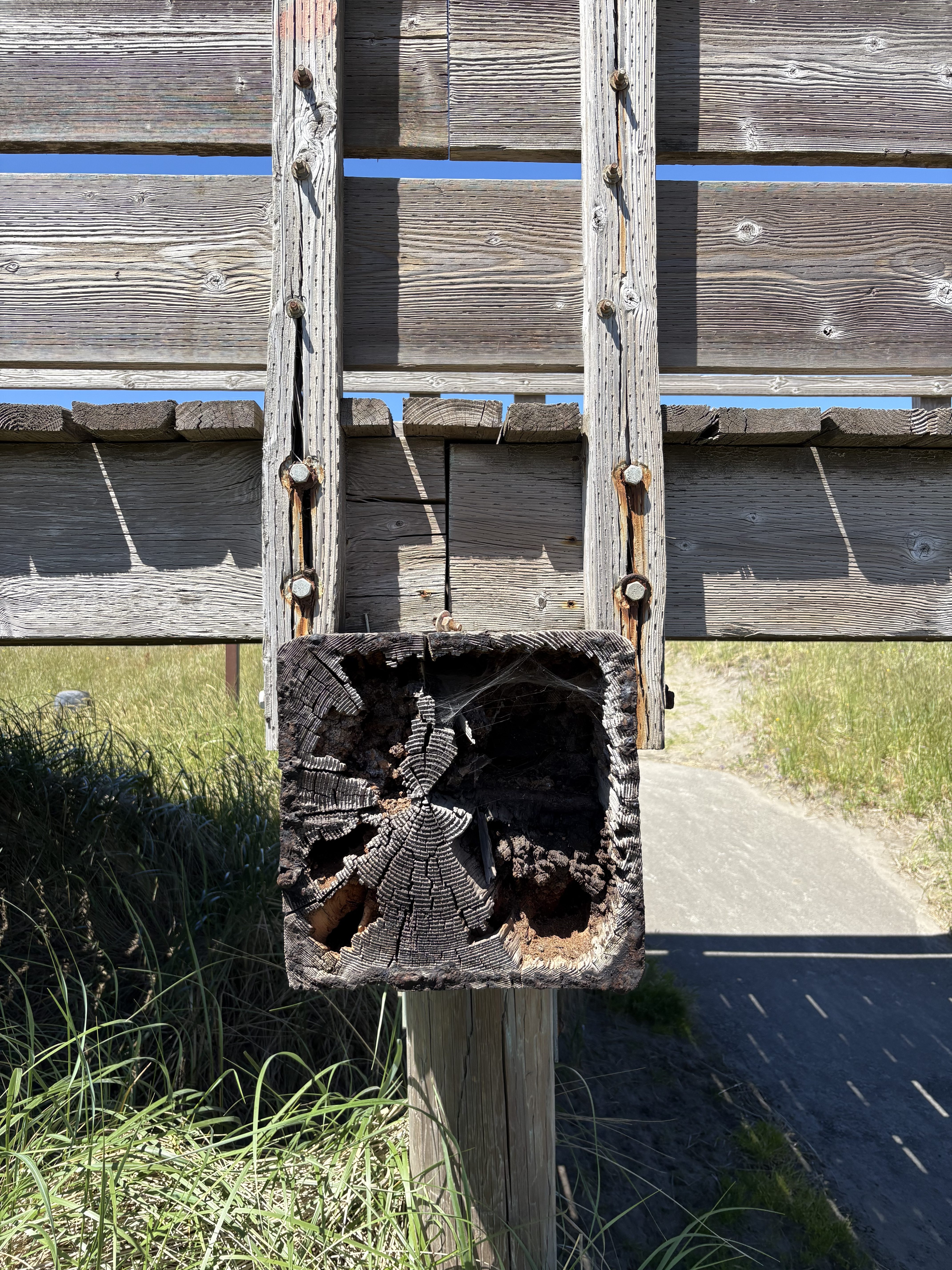Alpacas: Tough hummers grow soft fleece
Published 4:00 pm Tuesday, February 25, 2003

- Steve Ancell owns and operates the Lolomi Alpaca farm in North Plains, Ore. He shared his knowledge of the animal at the Full Circle Cafe in Ocean Park last week. DAMIAN MULINIX photo
OCEAN PARK – Members of the Chinook Spinners weaving guild got a treat last Wednesday at the Full Circle Cafe. And no, it wasn’t just a piece of Colleen Smith’s pie.
Steve Ancell, owner and operator of Lolomi Alpaca Farms in North Plains, Ore., dropped by to give a presentation on his rare, fleece-producing animals. Much like sheep, fleece is the alpaca’s main purpose. And though related to llamas, they are not pack animals. The fleece of the alpaca is spun into yarn of a very high quality fiber. It is the same thickness as sheep’s wool, but is four times warmer and stronger. It is also soft like silk, not as prickly as sheep’s wool.
The alpaca is a relatively new animal to the U.S.
“We got into the business in 1994,” said Ancell. “The alpacas came into the nation in 1984.”
Originally from the Andes Mountains region – Argentina, Peru, Chili – the alpaca has found a place in a western market, and a home at Ancell’s Oregon farm.
“We were looking for an investment,” said Ancell, “and I looked at beach properties and stuff. We did all kinds of things. It just became a hassle.”
Around this time, Ancell said his wife asked him about alpacas.
“I didn’t even know what alapacs was,” he said.
Ancell said she had first learned about alpacas on a television infomercial.
“I was kind of skeptical,” Ancell added.
There was a ranch in nearby Hillsboro that raised the animal and they went to look into it. Upon perusal, Ancell said he thought they were just another exotic animal – but then he checked into the fiber aspect.
He researched how the yarn was made by touring mills and reading books. He found that in Peru, because of the strength of the fiber, families will pass alpaca wool garments down over several generations – not that Ancell himself would be making anything like that.
“I still don’t know how to spin or knit or anything,” he said.
Ancell uses what are called “mini-mills” for processing his fleece into yarn. Large operation mills blend different wools together. Ancell goes the smaller route because the wool of each animal is an individual. The animals are different colors, so their wool is never dyed. The names of the yarns are the same as the names of the individual animals.
“Say, if they like Carlos, they can call me up and order more of that,” he said.
About 10 women from the Chinook Spinners got the chance to check out some of Carlos and other colors when Ancell spoke at the Full Circle Cafe. The cafe shares a building with the Tapestry Rose yarn shop, both run by Colleen Smith and her husband. Smith said that she and the others had the opportunity to learn a lot about the animal and the industry.
“You never see the other side of it,” said Smith. “It was extremely interesting.”
“I wish I could’ve brought one down,” said Ancell.
Ancell tours regularly, speaking to knitting and spinning guilds, as a way to both further the exposure of alpacas and to sell his wares. On this day he brought everything from whole fleeces, to yarn, to woven garments like hats and scarves, things that as Smith said, raises a hobby to an art.
“People who do spinning, weaving, they feel it’s an art form,” said Smith. “We wear art.”
Ancell started out with just two alpacas, costing him a total of $45,000. He said that they can cost in the range of $15,000 to $20,000 per animal. He now operates his farm with 18 total.
The fleece is sold in pounds, at a two to five pounds per animal average. Ancell said he gets between 50 and 100 pounds per shearing, which is done once a year – another chore he leaves to experts. Ancell has specialists from New Zealand come to do it.
“If you don’t know what you’re doing, you can ruin thousands of dollars in fleece,” he said.
Since they are rare, Ancell said there are many things people probably wouldn’t guess about alpacas. He said that they are very friendly animals and make a humming sound to communicate. If they are spooked, they squeal, and they love attention. He said they are also rather fearless when they have to be.
At one point a few years back, Ancell was worried about coyotes getting into his flock and thought about getting a couple of llamas, to protect the herd. But when a coyote did get in, he got a surprise.
“The alpacas charged him,” said Ancell. “He couldn’t get out of there fast enough.”
The Tapestry Rose is open daily, except Mondays, and holds regular exhibitions of spinning and weaving.








